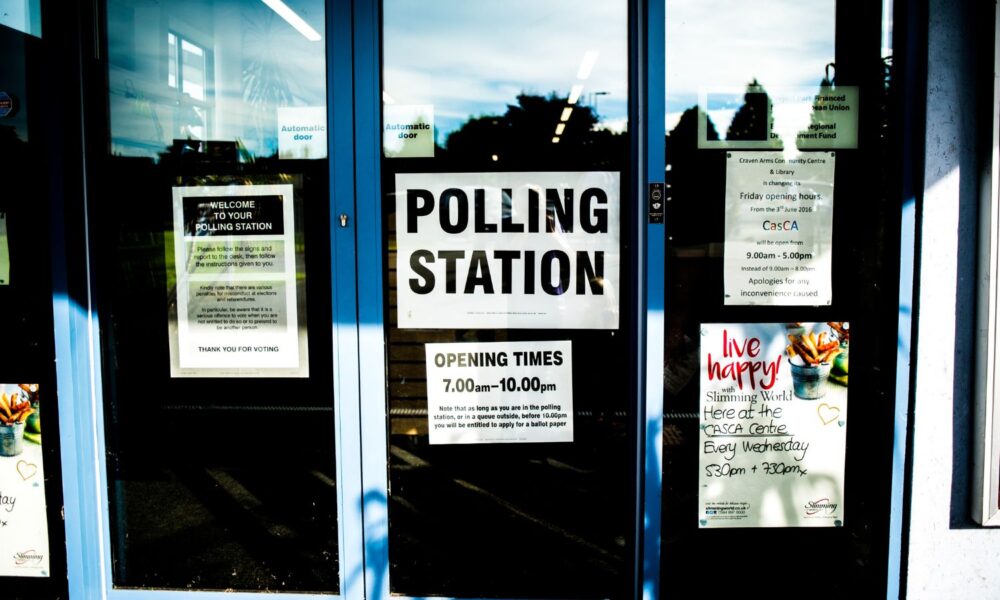It may take time to determine the winners of the 2022 general election, and that’s OK.
If you are voting today–the final day to cast your ballot in the 2022 general election–you will join 44 million other US citizens who have already cast their votes either by mail (24.3 million) or through early voting (20 million). Political scientist Michael McDonald forecasts that approximately 117 million of us will have participated by the end of the day, for an overall eligible turnout rate of about 49 percent. That is 73 percent of the 2020 electorate–a historically high turnout for a midterm election, which we should all be celebrating.
With so many ballots being cast, election officials face the challenge of processing them accurately and in a timely manner. This is especially the case in large cities, where there may be hundreds of thousands of ballots for county elections officials to process. Table 1 shows how many mail ballots have already been returned in select cities that the Center for Science and Democracy is monitoring to ensure fair and accurate counts:
| County (city) | 2022 mail ballots accepted |
| Maricopa (Phoenix), AZ | 937,625 |
| Pima (Tucson), AZ | 255,558 |
| Fulton (Atlanta), GA | 19,527 |
| Wayne (Detroit), MI | 231,951 |
| Clark (Las Vegas), NV | 223,130 |
| Cuyahoga (Cleveland), OH | 118,843 |
| Allegheny (Pittsburgh), PA | 151,814 |
| Philadelphia, PA | 114,814 |
| Harris (Houston), TX | 57,871 |
| Milwaukee, WI | 65,453 |
Fewer ballots by mail
Overall, fewer by-mail ballots will be processed this year, compared to 2020, for several reasons. First, fewer people are voting (73 percent) compared to 2020, which is expected in a mid-term election with no presidential race on the ballot. Second, several states have changed election laws since 2020, which has changed the way that some people are voting. Third, with the reduced threat of the Covid pandemic, some people are choosing to vote in person even though they voted by mail in 2020. We can see evidence of these patterns in Figure 1, which shows the by-mail ballots received before Election Day as a percentage of total by-mail ballots counted in 2020.

More data about by-mail ballots
While all of these places will receive more by-mail ballots today, and for most states ballots that are postmarked by today, the total number of ballots is down more for some places than others. Atlanta is showing the greatest decline, and part of the reason may be that Georgia made it more difficult to vote by mail this year. However, Georgia counties, including Fulton, also saw record-breaking early in-person voting, suggesting that overall turnout is still going to be high. Post-election analyses will reveal whether or not such changes impact turnout among different types of voters.
Philadelphia is also showing lower by-mail returns, especially relative to Allegheny County (Pittsburgh) in the same state. Both places had similar vote by-mail returns in 2020, but this year fewer Philadelphians requested to vote by-mail (164k, compared to 190k in Allegheny), and the return rate is lower. Philadelphia has been a target of Republican lawsuits seeking to disqualify by-mail ballots that have date errors on outer envelopes. More than 2,000 such ballots were disqualified in the city last week. Again, we will have to assess final election tallies to determine the impact of such lawsuits on whose votes get counted.
On the other hand, by-mail ballots are coming in at a high rate in Wisconsin, even after more restrictive laws were implemented against voter registration drives. This is in large measure a function of Wisconsin’s historically high turnout rates, estimated to be approximately 66 percent of eligible voters this year. Similarly, Michigan and Nevada have made it easier for voters in Detroit and Las Vegas to vote this year.
Along with Philadelphia, Detroit and these other cities are being targeted for voter suppression and intimidation using a variety of methods, ranging from lawsuits to disenfranchise those who have already voted, to disinformation aimed at voters of color, and open intimidation. For these and other reasons, the Department of Justice is monitoring polling across 24 states (including every city above with the exception of Pittsburgh) to protect the rights of all citizens to access the ballot.
Federal and local law enforcement are also working to protect those on the front line of elections, the election workers themselves, who have received an unprecedented level of threats and intimidation in this election cycle from people motivated by election conspiracy theories. Community-led organizations, voting rights groups and organizations like the Government Accountability Project are also working to ensure that election workers have the tools they need to protect the integrity of our votes in the face of threats to subvert elections.
Expect delays
What this means for the outcome of the election is that close races, attempts to disqualify ballots, and threats against election workers may prolong the conclusion of this election for days or even weeks to come. Recall that in these same locations, election outcomes were not known on election night in 2020. Michigan and Wisconsin took an extra day. Nevada and Pennsylvania took 4 days. Arizona took 9 days, and Georgia took 16 days. And that was without the concerted effort we are seeing this year to intimidate voters and disqualify ballots.
So, it is going to be a long night, or many nights, for election workers and observers across the country. This is a different election in many ways. But we have an obligation to ensure that all of our votes are counted. That is not up for debate. We need to hang tight, to protect our most fundamental right.

